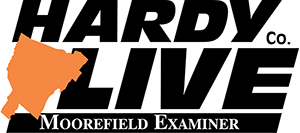The Fall of Versailles
By Stephen Smoot
During the height of the power of the Bourbon monarchy in France, a peculiar dynamic developed. Louis XIV, called the Sun King by the countrymen who loved or profited somehow from him, expanded a hunting lodge into the most opulent palace in Europe.
The palace at Versailles sits about 12 miles from the Paris city center, away from not only the unhygienic narrow streets, but also from options of lodging. The Sun King truly believed in forcing the powerful in France into tight orbits around his person. Proximity to the King meant proximity to personal advancement, to power.
Access to that power came at a price. One had to rent an apartment in the palace, which charged exorbitant rents even for a palace. Nobles plundered the wealth of their lands in the pays to pay for their palace lifestyles. Their entire lives revolved around palace intrigue and the King. They lost track of the needs and cares of the people in the countryside.
As far as government and power were concerned, Louis XIV himself liked to say “l’etat, c’est moi,” or “I am the State.”
Vast funds that otherwise might have enriched local communities and funded the growth of a vibrant middle class – as happened in Great Britain – went to the black hole of Versailles, never to return to whence it came except in the form of just enough crumbs to keep key people loyal.
Would anyone feel surprised to learn that Washington DC and its suburbs work similarly?
Even in the digital age, access to advancement works easier when living in or near the Capital, knowing the right people, paying the right price to get into the right venues to meet the right people. Outside of the government, but tied tightly to its interests, sits the community of non profits and non governmental organizations.
They serve two functions. When their side is in power, they help to articulate its message and execute its wishes. When their side is not in power they rally supporters across the nation to participate in elections.
Support for these DC 501 © 3s and 501 © 4s from donations that stream in from all over the country totals uncounted billions. Those billions could fill the accounts of local banks, be used in business investments, personal portfolios, or some kind of wealth creation instead of trying to manipulate power.
This system has enriched so many for so long that it seems normal. But normal is over.
With so much money tied to so much ambition, corruption seems inevitable.
Another model to consider lies closer to home in both time and geography. Tammany Hall served as the Democratic Party’s political machine for New York City for generations. The organization named for the building that served as its headquarters maintained its power in a simple way. Its representatives greeted immigrants when they came to America. They helped said immigrants get rudimentary housing and entry level jobs in government services such as police and fire protection.
In return, when they became citizens, the grateful immigrants voted not just for the Democratic Party, but for the Tammany Hall “slate.”
A slate is a list of organization approved candidates for office.
Tammany Hall spawned a number of imitators, including Raymond Chafin of Logan County. The former “boss” of the county stated in his autobiography “Just Good Politics” that democracy means that an elected official only help the people he knows voted for him.
Chafin built his power during the Great Depression. His work for the Democratic Party earned him a federal job with the Works Progress Administration, Chafin controlled who got the desperately needed jobs. Unemployed men who voted for the “slate” got a job. Chafin built not wealth, but power and respect. By 1960, his influence helped to sway the national primary for John F. Kennedy.
Back to the present. One of the first federal agencies to fall under the scrutiny of Elon Musk’s Department of Government Efficiency was the United States Agency for International Development, or USAID.
As investigators dig into the agency’s activities, stories from Senators and Congressman of USAID’s arrogance, and even aggression, in the face of attempted oversight is stunning. Even worse is the coming into public view of its modus operandi. USAID gave to organizations that supported the political viewpoints of its leadership, entirely Leftist, then those organizations in turn made political contributions to selected Democratic candidates.
In some ways, this represents a corrupt practice from West Virginia’s bad old days. The infamous “flower fund” required each State employee to make a regular small donation to a fund that provided flowers for the funerals of State employees or their significant others. It did that with a small portion of the largesse it accumulated.
The rest went into a slush fund for selected Democratic candidates.
Even worse was the extreme corruption that surrounded the State Road Commission through its existence in the 20th Century. Many still refer to the “Division of Highways” as “the State Road,” a subtle ripple from its powerful legacy.
Corruption permeated every aspect of the function of “the State Road.” Millions flowed through the hands of its officials. Contractors lived and died by lucrative contracts and operated at the mercy of corrupt bureaucrats. Powerful people wanted better roads near them and their businesses.
By the time the State of West Virginia got around to addressing it, it struck officials as easier to just tear down the old agency and replace it with something new and relatively cleaner.
Like USAID, the Flower Fund and the State Road Commission wore the fig leaves of assistance and need to cover the malevolence that lurked beneath. Unlike those two relatively picayune State examples, the USAID corruption has global reach and influence.
And USAID’s corruption even dwarfs the greatest reach of Tammany Hall.
An Oct 2019 article from the Left-wing British paper The Guardian, examined connections between USAID and the Clinton Foundation as both pledged to assist Haiti, one of the world’s poorest and most dysfunctional nations, after a major earthquake in 2010.
Private citizen, but former president, Bill Clinton personally headed the efforts from the Clinton Foundation in conjunction with his wife Hillary, then Secretary of State. They worked not through the Department of State, but the independent federal agency USAID.
Journalist Jonathan Katz was quoted by The Guardian in its 2019 article as writing in 2015 that “at every stage of Haiti’s reconstruction – fundraising, oversight, and allocation – a Clinton was now involved.”
They oversaw $4.4 billion in funds marked by Congress for aid. Every penny went through USAID.
But why USAID? As The Guardian explained, it was tapped to construct a port facility, but it failed to hire “staff with technical expertise in planning, construction, and oversight of a port.” That agency had not involved itself in port construction anywhere in four decades prior.
USAID also ignored a study that showed “a new port was not viable for a variety of technical, environmental, and economic reasons.” Also, Haitians did not want it and no business that the Clintons approached had any interest in using it.
Yet it was built with American taxpayer funds while emergency services and city water and sewer systems across the nation lack basic needs.
The Clintons also succeeded in building a swank new luxury Marriott hotel – again, in the poorest nation on earth.
Much like when President Franklin D. Roosevelt forced the Tennessee Valley Authority down the throats of that state, the people suffered. Just under 400 families lost their homes for a port no one wanted or needed.
The Guardian reported that by 2019, $2,3 billion dollars had gone through USAID to what that paper called “American companies,” but certainly connected non profits and NGOs benefited handsomely. Just over half of those dollars ended up in the hands of entities located in and around Washington DC
Neither the Haitian people nor the Haitian government, nor Haitian businesses saw direct benefit from this money.
Remember, this is only the first serious dig into the corruption, fraud, and waste. All DOGE wants to do is audit the agencies, much like the West Virginia State government did to itself several years ago.
“L’etat” is not USAID. It is not the Clinton Foundation. It should not be non profits and NGOs suckling from the government. “L’etat should be the will of the people expressed through elected officials, but tempered and guided by the United States and state constitutions to protect the natural rights of each individual as expressed in the first 10 Amendments.
“L’etat” should concern itself with core functions first, such as the protection of lives, property, and commerce. The Founding Fathers held this ideal of government most closely to their hearts.
Americans need to gird their loins for what they will learn about the federal government as DOGE digs deeper. It will get very ugly bringing these facts to light, but as the Washington Post has told Americans since 2017, “Democracy dies in darkness.”
Even more importantly, America’s Versailles must fall completely and utterly so that the people can get their government back.






